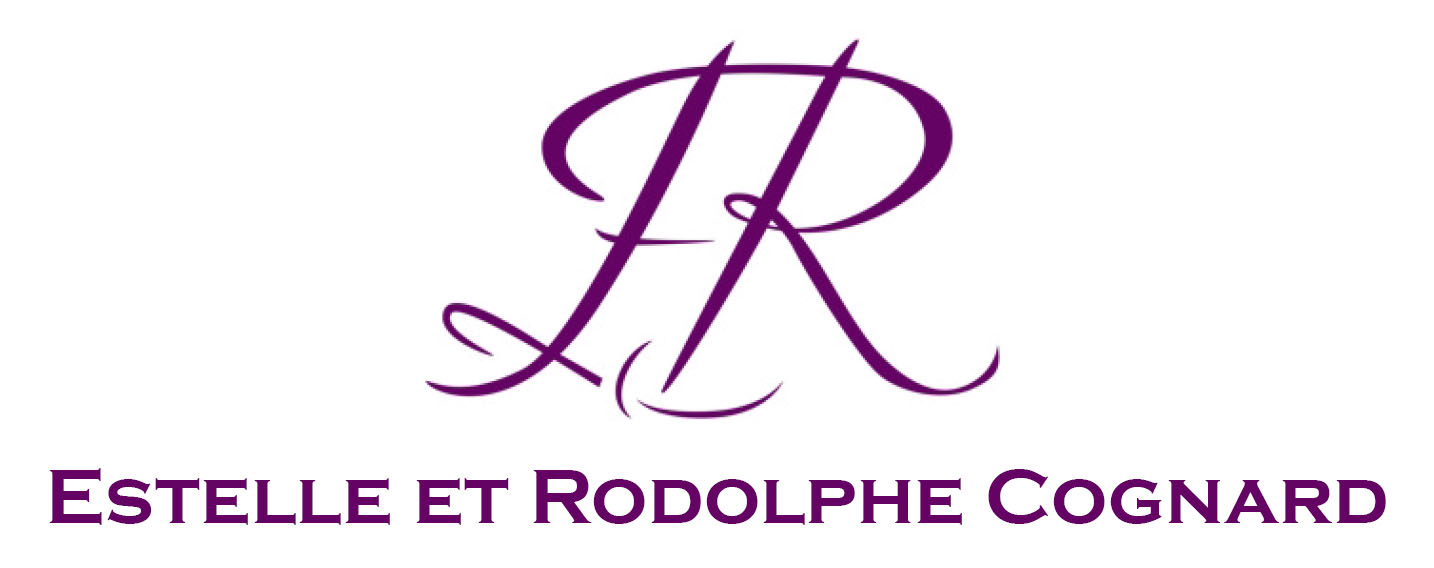
The Estate
1974 was a good year for Lydie Taluau with Max Cognard. It was that year that Lydie inherited 1 hectare of vines at the northwest end of Touraine and they established Domaine Lydie et Max Cognard. It was also the year that Lydie and Max’s daughter, Estelle, was born, followed by their son Rodolphe 4 years later.
In 1997, Estelle Cognard decided to gradually take over the family business, and in 2001 Rodolphe assumed winemaking duties, after which the estate was renamed Domaine Estelle et Rodolphe Cognard.
Today, the estate spans 15 hectares of vines in St Nicolas de Bourgueil and Bourgueil. Lydie and Max are now officially retired but are still very much a part of the business.
After a long battle with illness, Estelle’s brother Rodolphe sadly passed away on March 30, 2018. He transmitted his love of the profession, his talent in the cultivation of the vine, and the production of wines and thanks to his little notes during the various vinifications, the Cognard family continues to vinify, in his footsteps, fine and elegant red wines of the Loire Valley.
The Team
Estelle Cognard: Manager of the SCEA, in charge of all the commercial administrative part of the business as well as accounting and customer reception.
Olivier Nicolle: Vinification of the wines, manual work of the vine (pruning, green work, etc.), and management of the vineyard.
Matthieu Petit: Manual (pruning, green work, etc.) and mechanized (tillage, etc.) work on the vines, vineyard management.
Audrey Bossard: In charge of communications, work in the cellar (labeling, packaging, etc.), administration, commercial actions in the field (fair, etc.). Customer reception.
Lydie & Max Cognard: Since their retirement, Lydie has owned a cottage “le Berlot” in Benais. She now spends most of her time there. Max still takes care of the cellar for the filtration and helps from time to time in the vineyards.
The Terroir
11 ha of vines in A.O.P Saint-Nicolas de Bourgueil – The majority of these soils are made up of old alluvium. The sandy soils bring suppleness and elegance to the wine. 4 ha of vines in A.O.P Bourgueil – There are 3 types of soil here: majority clay-limestone, gravel, and sandy silt.
Viticulture
The vineyards are devoted in entirety to Cabernet Franc, planted at a density of 4,500 vines/ha, with the rows of vines interspersed with grass to keep down the weeds and to force the vines to root deeper for nourishment. Since the 1980s, the estate had practiced lutte raisonnée, or reasoned agriculture, but in 2017 they made the decision to covert to organic agriculture, and 2018 was their first organic vintage. In 2020, their domaine was officially certified organic.

Bourgueil Rouge Cuvée Les Tuffes
Soil: 2.5 hectares of clay-limestone, 1.5 hectares gravel
Production Area: 4 hectares in both Benais and Bourgueil
Average Age of the Vines: 25 years old
Grape Variety: 100% Cabernet Franc
Harvest: Mechanical in order to split up the harvest depending on the maturity of the grapes
Vinification: Alcoholic fermentation lasts 14-21 days in stainless-steel thermo-regulated tanks. Pre-fermentation maceration for 48 hours at cold temperatures, followed by fermentation for about 18 days between 25-28°C to extract the aromas. Light filtration done with care.
Aging: A minimum of 18 months aging in tanks and partially in barrels followed by bottling.
Tasting Notes: Deep ruby color. The nose is complex with notes of stewed fruit and spices. The mouth is ample and well balanced, supported by the tannins and a lovely freshness.
Food Pairings: Grilled meats, poultry, goat cheese
Serving Temperature: 13-16°C
Cellaring Potential: Good to drink immediately, but especially 2 years after bottling. Cellaring potential of 2-10 years.

Saint-Nicolas de Bourgeuil Cuvée Estelle
Soil: Sandy soil, deep clay
Production Area: 8 hectares
Average Age of the Vines: 30 years old
Grape Variety: 100% Cabernet Franc
Harvest: Mechanical in order to split up the harvest depending on the maturity of the grapes and the weather
Vinification: Fermentation lasts 7-18 days in stainless-steel thermos-regulated tanks. Pre-fermentation maceration for 48 hours at cold temperatures, then fermentation between 25-26°C to extract the aromas. Light filtration done with care.
Aging: Maturation between 8-14 months in stainless-steel tanks, followed by bottling.
Tasting Notes: Beautiful, limpid ruby color. The bouquet is fragrant with red fruit such as raspberry, blackcurrant, and strawberry. On the palate, the wine is fruity and easy to drink.
Food Pairings: Simple dishes, charcuterie, grilled meats, fish, goat cheese.
Serving Temperature: 12-15°C
Cellaring Potential: Good to drink immediately, but especially after 1-3 years

Saint-Nicolas de Bourgeuil Cuvée Les Malgagnes
Soil: Silty clay
Production Area: 2 hectares
Average Age of the Vines: 40 years old
Grape Variety: 100% Cabernet Franc
Harvest: Mechanical in order to split up the harvest depending on the maturity of the grapes and the weather
Vinification: Alcoholic fermentation lasts 14-21 days in stainless-steel thermo-regulated tanks. 10% minimum of the vintage in barrels. Pre-fermentation maceration for 48 hours at cold temperatures, followed by fermentation for about 18 days between 30-35°C to extract the aromas. Light filtration done with care.
Aging: 15 months in tank and/or 10 months in Burgundian barrels for half of the maximum harvest, followed by bottling.
Tasting Notes: Dark brick color. The bouquet is complex with fragrant notes of wild berries. The palate is pulpy and concentrated. This is a wine of character that vividly expresses the terroir.
Food Pairings: For younger vintages, pair with poultry. For older vintages, pair with red meats and aged cheeses.
Serving Temperature: 15-17°C
Cellaring Potential: Good to drink immediately, but especially 2 years after bottling. Cellaring potential of 2-15 years.


